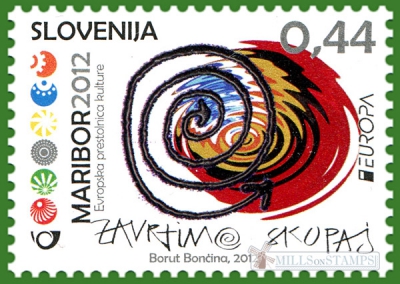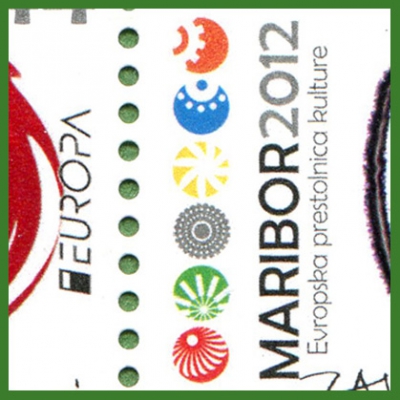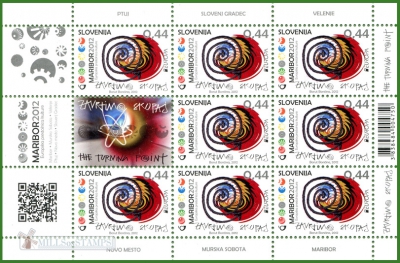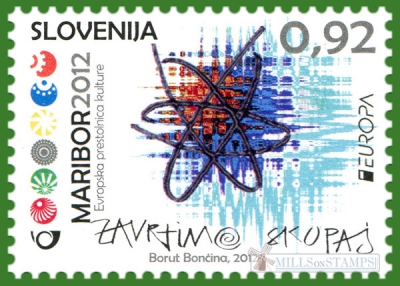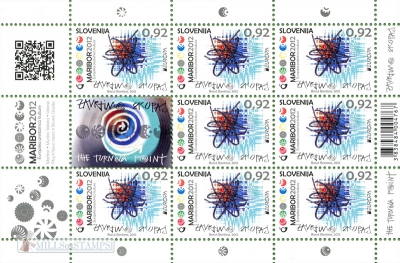-
Europa'CEPT. Visit Slovenia
Slovenia 2012.03.30
In issue: Stamp(s): 2 Sheet(s): 2
Printing: 4-colour offset
Issued in: 8 stamps and one label
-
Number by catalogue: Yvert: 791
Perforation type: 11 ¾x11 ¼
Subject:
44 cents. Abstract composition. The symbol of Maribor*, that selected as the Cultural Capital of Europe in 2012.
Topics: Stylized mills Various Watermills
-
Number by catalogue: Yvert: 792
Perforation type: 11 ¾x11 ¼
Subject:
92 cents. Abstract composition. The symbol of Maribor
Topics: Stylized mills Various Watermills
-
Subject:
In the design of the sheet, except for the central label and the left margin, Maribor'2012 characters are also introduced to the up and bottom of sheet.
Additional:
*The selection of Maribor as European Capital of Culture 2012 is an opportunity for all its citizens. An opportunity for the city to blossom and to bring together all its creative spirits. All who are working for a better future, at all levels. Including the partner towns – Murska Sobota, Novo Mesto, Ptuj, Slovenj Gradec and Velenje – involved in the "Maribor 2012 – European Capital of Culture" project.
During its year as cultural capital, Maribor presents itself to the world with a distinctive logo. The Maribor 2012 logo consists of six coloured circles: red for Maribor, like a jet turbine; green for Murska Sobota, for the many watermills that once lined the river Mura; the grey circle represents Novo Mesto and nuclear energy; Ptuj is represented by a yellow circle symbolising a traditional wind-rattle*; the blue circle represents space travel and Slovenj Gradec; and a powerful industrial note in orange represents Velenje.**A klopotec (or wind-rattle ) is a wooden mechanical device on a high wooden pole, similar to a windmill. It is used as a bird scarer in the vineyards of traditional wine-growing landscapes of Slovenia, Austria and Croatia. It is one of the symbols of Slovenia and Styria.
The windmill has four, six or eight blades driving an axis with a sail or vane that is constructed to swivel so it is always positioned perpendicular to the wind. As the axis rotates, wooden hammers are lifted off their resting position by fixed notches. As they fall back, they rhythmically impact on a wooden board. While the quality of the sound is dependent on the wood of which the hammers and sounding boards are made of, the rattle frequency depends on the number of hammers, as well as changes in wind speed.
The device is used primarily to scare starlings and other birds off the vineyards so that they do not peck grapes, but also as a folk instrument. A folk belief also states that klopotecs drive snakes from the vineyards and soften grapes.__________
See also FDC for this issue
Size (of sheet, booklet) mm: 148x98


